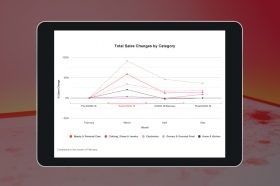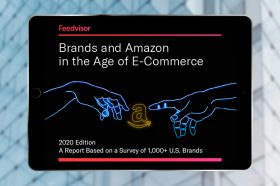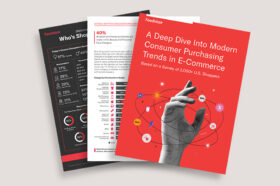Resources - Blog
Tracking Customers’ Changing Needs During and After COVID-19
Stay on top of the latest e-commerce and marketplace trends.
The novel coronavirus pandemic and its subsequent lockdowns have altered the way people live their lives; shopping habits included. The challenge for businesses now is to follow the changing needs so that they can meet them successfully and continue generating profits. In this article, we highlight key elements in doing just that.
Stay on Top of the Latest Developments
The COVID-19 situation continues to evolve worldwide. Lockdown measures are lifted and then, with new infection spikes, their easing is paused, or they are reinstated. Keeping up to date with the most recent coronavirus news is important since customers will react to that and it will influence what they do next — if their movements are curtailed again, they might return the gym bag they just bought.
Staying on top of changing buyer opinions is just as important as keeping abreast of COVID-19 and government control measures. Since the beginning of the outbreak, experts have identified several key trends in customer attitudes. Curbside deliveries are an expected norm now, and online buyers are also incentivized by sales, discounts, and free shipping during this time.
Many individuals (up to 46%) who had never worked from home prior to the lockdowns, now say that they plan to do so more often from now on. At the same time, social distancing remains a top priority. These facts suggest a spike in homeware purchases for home offices and living spaces where people anticipate spending most of their time in the foreseeable future. Toys, entertainment, gifts, hobby, specialty products, and foods and beverages are other areas where consumers are buying more.
The social and environmental impact of the coronavirus cannot be ignored either. The trend toward buying local, thus supporting smaller businesses and reducing carbon footprints, is growing. Retailers need to pivot the products they are selling to cater to these new demands. Since sustainability is also a primary concern, your packaging and the brands you represent will have to be reevaluated.
Connect With Customers
To interpret COVID-19 news and the data regarding general consumer trends, you need to connect with your customers. For example, the panic-buying seen in the early days of the outbreak or lockdown may not be repeated, even as restrictions are reinstated. Society is more accustomed to this situation now and may not be as worried that all outlets will run out of toilet paper. On the other hand, perhaps your particular client base will be.
The only way to have a clear idea of what your customers are thinking is to communicate with them. You can do so in various ways; set up a chatbot or live chat on your website, create social media pages that allow you to interact with followers, or send out a regular email newsletter.
Encourage people to respond to your content so you can get a clearer sense of what they are thinking. This gives you insight into potential trends and helps to gauge the current mood of your target market. Consider the age of your clients when connecting with them, too. While Facebook or Twitter may suit a younger audience, for an older demographic, SMS marketing might be ideal.
Monitor Your Website Traffic
The browsing habits of individuals give you a good idea of their priorities, what they are thinking, and the products that they need to or will be purchasing. Investigate what search terms are used most often to find your type of product to give you an idea of what customers want. A search for “discount bulk buy sanitizers” has a different focus to “most effective hand sanitizers”, or to a search for sanitizers manufactured in a certain area.
Monitoring website traffic helps you ensure that your search engine optimization (SEO) is on point and that you are coming in high on the search engine ranking pages (SERPs) that are relevant to your products. Split tests are also very advisable here. After randomly directing visitors to different versions of your page, with distinctions in their special offers or content, you will be able to analyze the results and see which ones your target market responds to most. If you run an e-commerce or e-marketplace store, there are platform-specific SEO aspects you need to keep in consideration.
Stay on Target by Analyzing Behavior
Split tests are just one example of the data analytics that can be run on online consumers. In addition to noting trends in attitudes and general responses, it is important to analyze consumers’ actual buying behavior. The Inventory Age report is another resource, providing information on how long products have been held in Amazon fulfillment centers, and which items will be subject to long-term storage fee (LTSF) changes.
The daily Inventory Health report also gives valuable insights into statistics that are between one and three days old. Exclusive to FBA sellers, this gives actionable information on the current sellable and unsellable items in your inventory, based on an estimated velocity of sales made from stock housed in Amazon fulfillment centers.
The velocity estimates are calculated for the last seven, 30, 90, 180, and 365 days, giving you a snapshot of buying trends for the past week, month, six months, and year. With behaviors changing quickly in response to the evolving COVID-19 situation, and businesses needing to follow suit in order to stay profitable, this information is crucial.
The Inventory Health report is also very user-friendly, which will help you read and then apply to insights that it offers. The product name, condition (such as whether it is new or used), sales rank, category, SKU, and ASIN are all provided.
Final Thoughts
As buyers’ needs and wants change in the face of COVID-19 and its aftermath, businesses will need to alter their strategies accordingly. Online retailers are arguably in the best position to leverage the new marketplace, with more people making digital purchases and those who did not traditionally buy online, such as older demographics, doing so now.
While pivoting your focus and possibly your specific products is important, it is also vital that you keep your brand message constant. These are times of great change and stress, and most people are looking for companies that they feel they can really trust. Track customer needs carefully, and you will be able to ensure that your business is one of those.
Learn what Feedvisor can do for your business.
When you partner with Feedvisor, you automatically receive access to our true, AI-driven technology and hands-on team of e-commerce experts. Contact one of our team members today to learn more about our end-to-end solution for brands and large sellers on Amazon, Walmart, and e-marketplaces.




